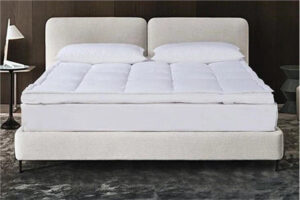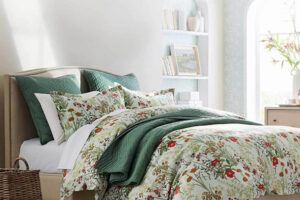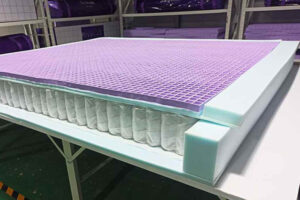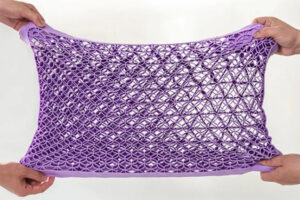Cushions have been around for a long time and have grown from a rather stiff leather seat cover originally intended for manor houses to one of the must-have designer items for interior designers worldwide. Choosing your new cushions can seem like a daunting prospect, especially when you consider the plethora of options available. But remember, deciding on the decor of your home and then purchasing the item of your choice should be exciting And a pleasure, not a chore. Don’t worry, this Cushion 101 guide will help you.
The secret to making good pad choices and doing so without too much stress and tension is to take your time and not be too impulsive. Look at the area where the mat will be placed and think about what you want the mat to do in that area. Do you need some bright colors to add a little freshness to your look, or do you need some extra comfort or support for your back? Are you simply replacing old or worn-out cushions with similar ones, or looking to overhaul your decor?
Once you know what kind of cushion you want, it’s time to think about what type of cushion you need, which means what kind of filling and what kind of cover. The right cushion can add a new dimension to your decor, or add the finishing touch to any room. To help you make your final decision, let’s take a closer look at the different types of cushions.
Let’s start with the more widely available types of mats which can be found in most high street stores or online. A pad is simply a stuffed bag in a sleeve and can come in all shapes, sizes, styles, and colors. Many different base ingredients can be used to make cushion fillers and covers, some of which are natural and some of which are synthetic. If we look at the different cushion fillings available, we can get an idea of what the different ingredients can offer us.
1. Natural cushion filling
For starters, you can choose natural fibers for cushion filling, including wool, cotton, feathers, and even plant derivatives like hemp. The type of padding used will affect the softness and feel of the finished cushion. For example, if you need a soft, comfortable cushion to snuggle in, it makes sense to opt for a filling like a feather or down. Down, which comes from the smallest feathers of a goose or duck, is very soft to the touch and very warm, and it is often used in bedding because of these properties.
Because down is hard to source, it’s often very expensive, perhaps a better alternative is the more common cushion and pillow fillings where down and feathers are mixed in varying proportions, the cheapest options are 80% feathers to 20% down, though Other blends are available by price range. Keep in mind that cushions made with these types of fillings need to be shaken, or “plumped,” periodically to ensure they retain their shape and softness.
Washing and drying the inside of feather and down cushions can be difficult, so keep that in mind if you feel you may need to wash your cushions more often. Drying feathers down in the dryer is best, as this will help re-fill the fill and keep it softer for longer.
A slightly less soft but more durable fill might be wool or cotton, although both fibers can be processed into a soft and resilient fill that provides good wear. Treated hemp or sisal provides a hard-wearing and durable fill. When cleaning these types of cushion fillings, try to follow the manufacturer’s recommendations.

2. Man-Made Fillings
Generally, cushion manufacturing costs are kept low by using easily sourced man-made materials, and foam or latex are more commonly used fillers these days. These are widely used to make cushions and upholstery because the foam tends to hold its shape well and is very strong and durable. It can also be easily cut into almost any shape or size, making it ideal for cushion fillers that may require various sizes.
Foam filling is made from a polyurethane mix that is combined with other elements and placed in a mold, it can be very strong or very soft depending on the mix used. Foam is versatile and is also often shredded or shredded into smaller pieces to provide more softness and “give” your cushion. It’s easy to clean and is generally resistant to dust mites, making it ideal for use in potentially allergenic cushion fillers.
Other widely available and fairly cheap cushion fillers are hollow fiber and spherical fibers, again these are man-made and tend to give a soft feel to your cushion filling. The hollow fibers are soft and stretchy and look like lint, and the ball fibers are small round fiber balls, both great if you have allergies and are easy to wash and dry.
So now that we have an idea of the padding we have to choose, let’s take a look at what fabrics our cushion covers might be made of, again the choice is huge.
3. Choice of cushion cover
Something to keep in mind here again, as with your choice of padding, is if you or someone in your family may have sensitive skin, as certain fabrics can aggravate this. If this is the case, it may be wise to try choosing natural fabrics such as cotton or silk, although these can sometimes cause problems as well. Most manufacturers will display a description of the material on their labels to help you make your choice.
This means that many of today’s more widely available cushions are either man-made or a mix of synthetic and natural fibers to keep costs to a minimum. Cotton, rayon, and polyester are all widely used and are durable and washable fabrics. Keep in mind that fabrics such as wool and silk may require specialized cleaning and care.
If you have children or pets in your home, your type of cushion will likely need to be durable, washable, and possibly stain-resistant, so choose a padding and cover that will give you the best wash and wear results. If you’re just looking to stack some nice cushions on your bed where wear and tear won’t be an issue, both the padding and the cover fabric may be less practical but more decorative.
1) Neutral color options
Using neutral tones not only showcases pretty prints or decorative cushions but also brings great appeal to an entire decor scheme, making them exciting and fun rather than gimmicky and overbearing. Contrasting textures need to be included in the mix, so opting for a lumpy or soft velvety finish can be important, especially when used on materials like leather.
Details such as embroidery or piping can also add interest to the texture. A misshapen cushion may have reached the end of its life and need to be replaced. No matter how expensive a cushion is, it has a lifespan. If you find that your mat is bumpy or messy, it can ruin the look you were hoping to achieve. If you really like the cushion, and the exterior is still intact, you can replace the interior with new padding.
When shopping for neutral-toned pillows to use in any room, consider getting the best quality and strongest fabric possible. These shades are often used in multiple decor changes and in several different rooms. Consider cushions that can be used in a variety of rooms.
2) Size and shape
The size and shape of the mat is another thing to consider, and again there are a variety of sizes and shapes to choose from. Most regular cushions measure around 18 inches square, but larger cushions have grown in popularity recently, and round cushions are a good choice for any display. Cushion rolls or cushions are a great way to add a little interest to your cushion display and look especially good on a bed or chaise longue.
As a general rule, when arranging cushions, try to place larger cushions in the back and smaller, possibly sleeker, or better-shaped cushions in the front for added texture and color. Cushions with buttons, ribbons, or ruffles can bring a chic designer touch to your room. Don’t be afraid to use different colors and materials to bring life and depth to your displays, and add draping or wrapping over your cushions for a casual but fun look.
Cushions can be added to nearly every room in the house and can completely transform your existing look for a fraction of the cost of an entire room remodel. Try adding some stunning cushions to your bedroom design, use cushions on the bed that match those on a chair or window seat to bring cohesion to the room. Maybe some fun cushions in various sizes and shapes on the floor for a casual but fun look, and of course, there’s always a stunning statement cushion or two on the sofa.
Remember, seating cushions in the kitchen not only make sitting more comfortable but also add a touch of color and warmth to your dining area. In kitchens and dining rooms, try to choose mats with stain-resistant washable covers in case of spills or accidental soiling. Mats are not only suitable for indoor use, there are also mats for outdoor gardens and terraces specially designed for this purpose.
They’re usually treated to be waterproof so they can withstand a shower or two without too much damage. Adding bright designer cushions to your outdoor seating will bring some extra comfort and style to your dining area. Whether the room is indoors or out, there is a cushion to complement and enhance your decor and theme.
3) Cushion cover cost
The quality of the cushion is not necessarily a matter of price, but a matter of craftsmanship, material, and design quality. Your decorating style is the most important element when shopping for decorative cushions. Color, design, size, embroidery, embellishments, and fabrics all make up a unique pillow that is not usually used alone to create a luxurious design.
A fantastic mat can be the finishing touch to a large group, but you can end up with too many of them, or the mats will have too much of the same color or too many differences in texture. But that doesn’t mean you shouldn’t create layered looks. In fact, layering multiple cushions together is just what you need to create the perfect look in your room. The bolder or more intricate the print on your pillow, the more you’ll need a solid color or subtle pattern to dominate the decor and make it livable.
Some cushions look out of place anywhere other than a bedroom or living room. It may be that the design, color, or pattern limits their use. But let your imagination be your guide. Many people find a cushion they like and design the rest of the room around it. From as little as £5, our range of premium cushions is great value and affordable.
How useful was this post?
Click on a star to rate it!
Average rating 5 / 5. Vote count: 2
No votes so far! Be the first to rate this post.








